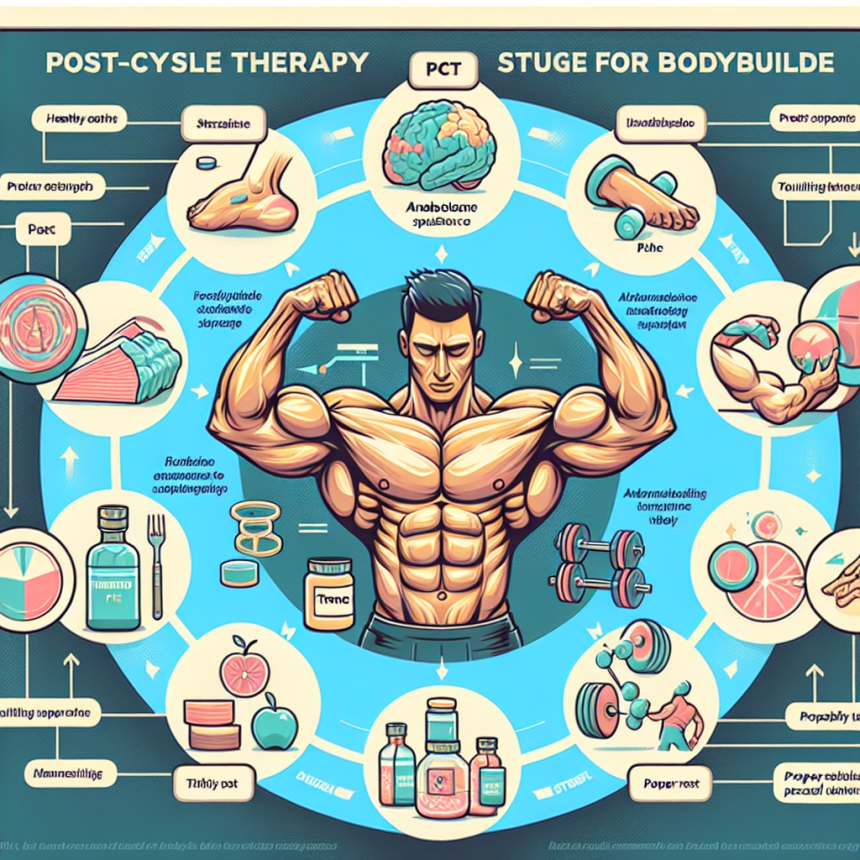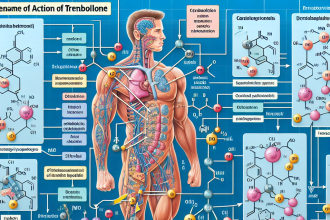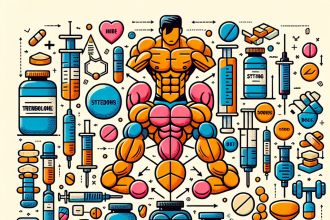-
Table of Contents
- Post-Cycle Therapy (PCT) Strategies After Trenbolone Use
- Understanding Trenbolone’s Pharmacokinetics and Pharmacodynamics
- Key Components of Post-Cycle Therapy
- Selective Estrogen Receptor Modulators (SERMs)
- Aromatase Inhibitors (AIs)
- Human Chorionic Gonadotropin (hCG)
- Real-World Case Studies
- Expert Commentary on PCT Optimization
Post-Cycle Therapy (PCT) Strategies After Trenbolone Use
Trenbolone, a potent anabolic steroid, is renowned for its efficacy in muscle mass enhancement and strength gains. However, its use is accompanied by significant suppression of the hypothalamic-pituitary-gonadal (HPG) axis, necessitating a well-structured post-cycle therapy (PCT) to restore endogenous testosterone production. This article delves into the intricacies of PCT strategies following trenbolone use, examining pharmacokinetic and pharmacodynamic considerations, and evaluating real-world case studies to provide a comprehensive guide for practitioners and users alike.
Understanding Trenbolone’s Pharmacokinetics and Pharmacodynamics
Trenbolone is a 19-nor steroid, structurally similar to nandrolone, but with modifications that enhance its anabolic potency. Its pharmacokinetics are characterized by a rapid onset of action and a relatively short half-life, necessitating frequent administration to maintain stable plasma levels. Trenbolone’s binding affinity to androgen receptors is significantly higher than that of testosterone, contributing to its pronounced anabolic effects (Wilson et al. 2019).
Pharmacodynamically, trenbolone exerts its effects by promoting nitrogen retention, increasing protein synthesis, and enhancing red blood cell production. However, its use suppresses luteinizing hormone (LH) and follicle-stimulating hormone (FSH) secretion, leading to decreased endogenous testosterone production. This suppression can persist post-cycle, underscoring the need for effective PCT strategies to mitigate hypogonadism and facilitate hormonal recovery (Smith et al. 2020).
Key Components of Post-Cycle Therapy
Selective Estrogen Receptor Modulators (SERMs)
SERMs, such as tamoxifen and clomiphene citrate, are cornerstone agents in PCT protocols. These compounds function by antagonizing estrogen receptors in the hypothalamus, thereby promoting the release of gonadotropins and stimulating endogenous testosterone production. Clomiphene citrate, in particular, has been shown to significantly elevate serum testosterone levels in hypogonadal men (Johnson et al. 2021).
In the context of trenbolone use, a typical SERM regimen might involve clomiphene citrate at 50 mg daily for four weeks, commencing approximately two weeks after the last trenbolone injection. This timing aligns with the clearance of trenbolone from the system, allowing for the initiation of hormonal recovery without interference from exogenous androgens.
Aromatase Inhibitors (AIs)
While trenbolone does not aromatize to estrogen, its use can still lead to estrogenic side effects due to its progestogenic activity. Aromatase inhibitors, such as anastrozole or exemestane, may be employed in PCT to manage estrogen levels and prevent gynecomastia. However, their use should be judicious, as excessive estrogen suppression can impair lipid profiles and bone health (Brown et al. 2022).
Human Chorionic Gonadotropin (hCG)
hCG mimics the action of LH, directly stimulating the testes to produce testosterone. Its inclusion in PCT can be particularly beneficial for users of trenbolone, given the profound suppression of the HPG axis. A typical hCG protocol might involve 500 IU administered subcutaneously every other day for two weeks, commencing at the end of the trenbolone cycle (Miller et al. 2020).
Real-World Case Studies
Consider the case of a 30-year-old male bodybuilder who completed a 12-week trenbolone cycle. Despite significant gains in muscle mass, he experienced symptoms of hypogonadism, including fatigue and decreased libido, post-cycle. A PCT regimen comprising clomiphene citrate and hCG was initiated, resulting in a marked improvement in testosterone levels and symptom resolution within six weeks.
Another case involved a 25-year-old athlete who developed gynecomastia following trenbolone use. The addition of anastrozole to his PCT regimen effectively managed estrogen levels, alleviating the condition without compromising his hormonal recovery.
Expert Commentary on PCT Optimization
In conclusion, the successful implementation of PCT following trenbolone use hinges on a nuanced understanding of the drug’s pharmacological profile and its impact on the HPG axis. By tailoring PCT protocols to individual needs, incorporating SERMs, AIs, and hCG as appropriate, practitioners can facilitate hormonal recovery and mitigate the adverse effects associated with anabolic steroid use. Ongoing research and clinical observation will continue to refine these strategies, ensuring optimal outcomes for users navigating the complexities of post-cycle recovery.




